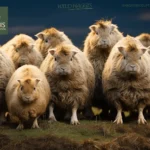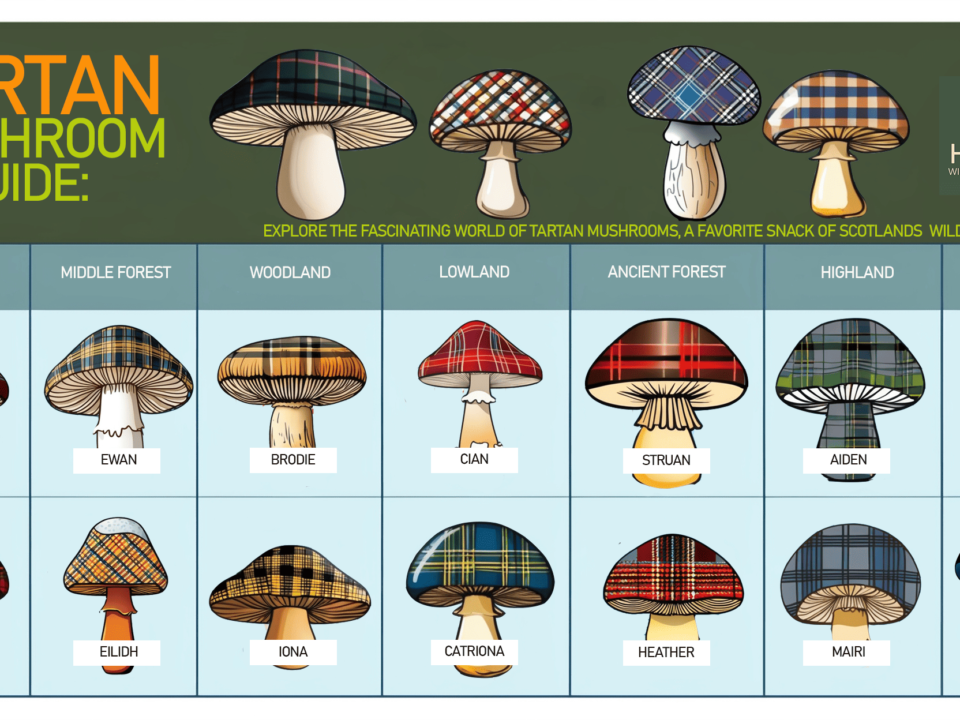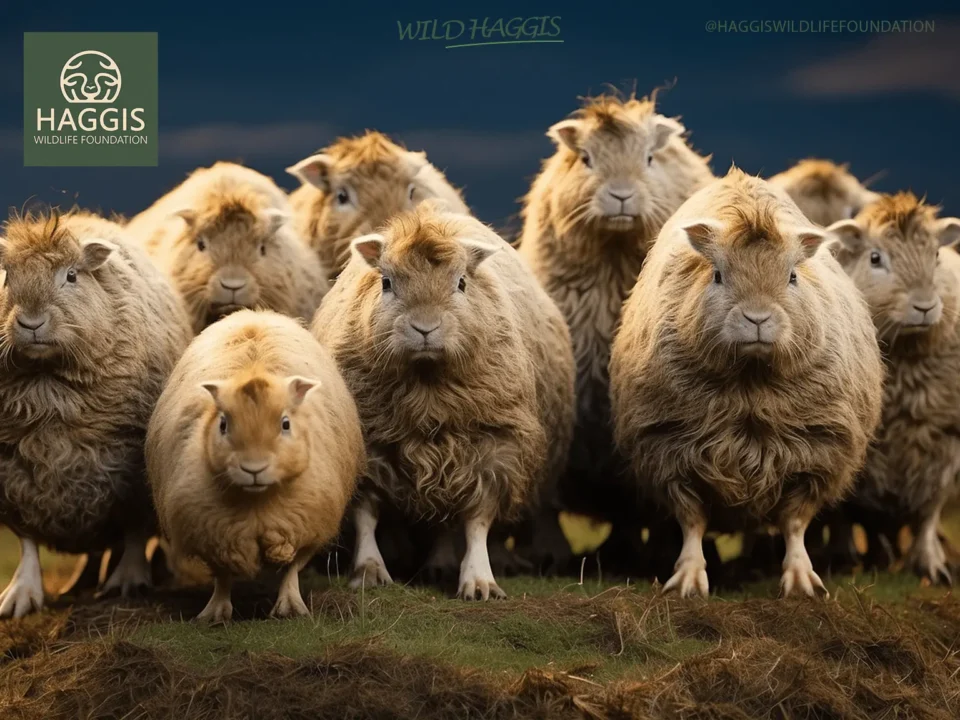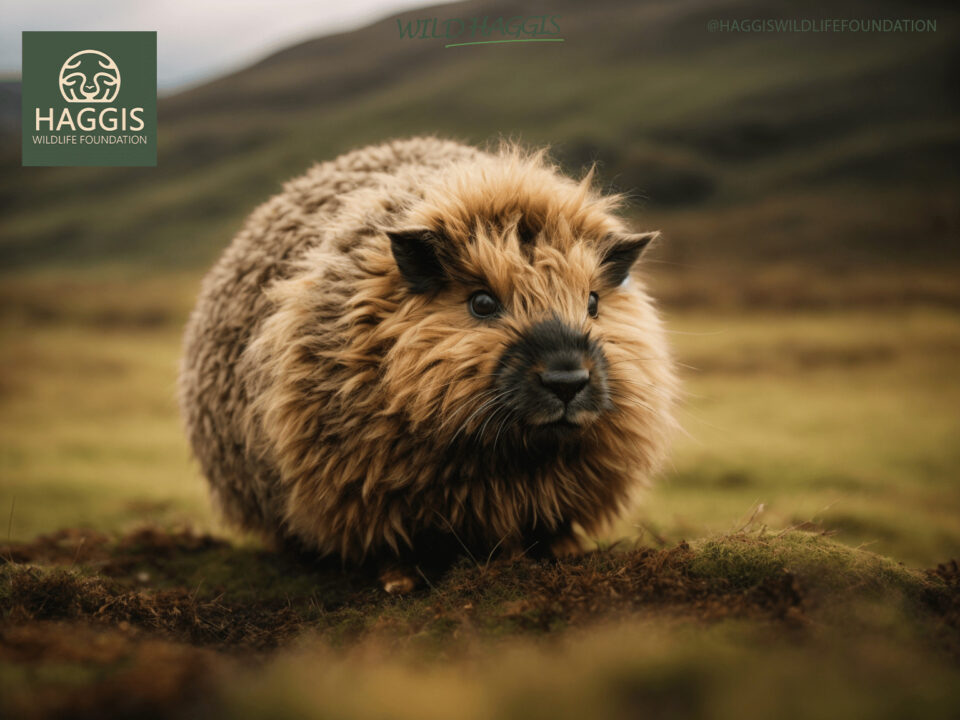
Finding Wild Haggis In Scotland
January 28, 2024
What Happened To Scotland’s Last Domesticated Haggis.
February 8, 2024Are Scotland’s Wild Haggis Real?
In the verdant hillsides of Scotland, a debate as old as the hills themselves whispers through the heather – the existence of the elusive wild haggis. To the sceptic, these tales are but fragments of folklore, yet to the believer, they represent a marvel of evolutionary adaptation. Considering the lack of physical evidence: So far, no actual living specimen has graced a scientist’s table, yet the inaccessibility of the highland terrain, where nature cloaks her secrets, might just be safeguarding these mysterious creatures.
Then, there are the eyewitnesses, seasoned wilderness guides, and intrepid hikers, who speak of encounters with creatures of knotted fur and an unusual gait. Their descriptions paint a vivid picture, yet in the absence of tangible proof, they remain but tantalizing anecdotes. Critics may argue these sightings might be misidentified common fauna, shrouded in the mist of the moors, but the haggis enthusiasts counter, highlighting the unique adaptations that set haggises apart, a testament to nature’s endless creativity. While strong evidence supports the likely existence of wild haggi, as a distinct endemic species, absolute scientific confirmation remains lacking. Ongoing research focused on DNA sampling, camera trapping and pedigree mapping may yield more definitive answers. In the interim, the mystique lives on for potential haggis devotees and doubters alike. Perhaps the enduring mystery itself helps secure the haggis’ place in Scotland’s heritage.
Biology and Behaviour
The wild haggis exhibits distinctive biological features and behaviours seen in few other animals. It sports wiry, knotted fur perfectly suited for Scotland’s windswept mountains and bogs. Their sideways hopping gait allows expert navigation through heather and tall grass. Haggises follow seasonal migration patterns in the highlands, tuned exquisitely to fluctuations in weather and food sources like wild berries and mushrooms. While not fully understood, their territorial displays and mating rituals add a layer of mystique. Recent studies using camera traps and DNA analysis aim to shed more light on the hidden world of the wild haggis.
What Do They Eat?
Regional Dietary Variations of Wild Haggis
Contemporary research indicates that the wild haggis diets reflect differences across Scottish regions and ecosystems. Their adaptability to various landscapes, flora and nourishment levels enables thriving regional populations. In the Northern Highlands, they are known to consume lichens, mosses, and coarse grasses. Occasionally in winter, they have been observed digging through soil and snow for additional sustenance. In the lush Western Highlands, their diet consists of ferns, heather shoots, and wild berries like blackberries, raspberries and currants. Seed dispersal through their scat suggests they help propagate local shrubs. Their larger size, up to 1.5 times northern variants, likely reflects this better nourishment. The Eastern Highlands are dominated by heather growth. Here, wild haggises have specialized teeth to crush abundant heather year-round. They also sport camouflaged fur that hides them amidst purple heather blankets. Unique digestive enzymes extract nutrients other animals cannot.
Natural Habitats of Wild Haggis
Despite harsh conditions, clever adaptations enable the species to carve out ecological niches amid remarkably varied terrain. Their stealthy presence shapes landscapes in return as part of nature’s interconnected cycle. In northern regions, they make their homes on rocky cliffs and hillsides. Here, wild haggis dwell among scattered heather patches and in deep crevasses sheltering them from cold winds. Groups create interconnected burrow networks harbouring multiple generations. Western highland forests dot the landscape, covering hillsides in a mix of pine, oak and birch trees. Wild haggis tunnel through fallen logs and dead snags which offer both cover and grub. Mossy nests amid thickets of gorse bushes provide breeding shelter. Migrating groups follow deer trails during seasonal movements. The eastern steppe holds sweeping expanses of heather moorlands interspersed by peat bogs. Water-resistant fur allows wild haggis to tunnel into boggy hillslope earth for months at a time and their underground excavations and surface trails create channels facilitating water penetration. As with many species ranging from woodland grouse to Scottish wildcats, lowland haggis subgroups require study and stewardship. Their perceived competition with livestock and vulpine nature sparks little sympathy from farmers and landowners. However, their role in seed dispersal, soil engineering and pest control may ultimately facilitate a symbiotic coexistence if given the chance. Perhaps as environmental consciousness spreads, the haggises’ unique virtues can be recognized rather than reflexively scorned. Lowland haggises dwell amidst a patchwork of fields, meadows and scrubby woods bordering streams. Less is known about their habits given the lack of observation, but scientists speculate their fur sheds its seasonal camouflage in favour of a muted brown to blend into the landscape. Though diminished, genetic diversity in these peripheral groups may prove vital for long term resilience.
Breeding Habits
Wild haggises have an annual mating season beginning in early spring, marked by increased sightings and lively territorial displays as males compete for female attention. Courting males circle females while stomping the ground and bellowing loudly. Once a pair bond forms, they withdraw from the group seeking secluded dens lined with dried grasses and feathers. After a six week gestation period, female haggises give birth to litters averaging 3-5 leverets. Leverets remain in protective family burrows for the first two months, nursing milk from their mothers. By late summer they emerge to learn foraging and tunneling techniques from the group. Young haggises reach reproductive maturity after nine months. Mating patterns vary between lifelong monogamy, serial monogamy with seasonal re-pairing, and varying levels of polygamy based on environmental factors. Litter sizes correlate positively with abundance of natural food sources. Fourth-generation family groups form intricate interconnected burrow systems. Knowledge and resources pass trans-generationally on these sites. Seasonal migratory routes connect summer and winter grazing ecosystems, enabling exploitation of seasonal nourishment. Further study of family dynamics may uncover additional facets of their complex social structures.
Conservation Efforts
Expanding threats facing wild haggis populations have prompted increased conservation efforts across Scotland. Groups now monitor remote habitats using camera traps and GPS collars to collect detailed population and movement data without disturbing natural behaviors. This information directly informs habitat management planning aimed at sustaining resilient ecosystems. Controlled breeding initiatives in conservation facilities also boost genetic diversity and hedge against environmental volatility. Researchers collaborate with international wildlife conservation experts to import outside knowledge that expands domestic capacity. Outreach campaigns build public appreciation in local communities, hoping to reduce harmful human-wildlife conflicts through education. Partnerships with landowners promote haggis-friendly land use policies in exchange for sustainable eco-tourism opportunities. While substantial challenges persist, especially from progressive climate change, conservationists believe this multi-pronged approach combining technology, captive breeding programs, policy development and public engagement provides the best opportunity yet to preserve Scottish haggis populations into the future.
Looking Forward
While uncertainty persists around the long-term fate of Scottish wild haggis populations, steady advances in conservation technology and genetics research offer renewed optimism. Expanding highland habitat protections and community stewardship programs will provide a multi-pronged conservation strategy. International collaborations lend outside expertise while also raising the global profile of haggis conservation. Ensuring the survival of wild haggis populations in their natural habitat will enable the legendary creature to continue thriving alongside its mythic cultural counterpart. Dedicated environmental stewardship drawing on both modern science and generations of folk knowledge may one day allow majestic wild haggises to again roam the full expanse of the Scottish highlands, as they have for centuries prior. Our children could inherit a future where sighting the odd little beasts bounding through the heather once more sparks appreciation for nature’s resilience rather than its frailty in Scotland’s iconic landscapes.





2 Comments
Oopps!
Having just read your extensive copywright notifications I am a little worried that I may be in breach of the aforesaid conditions.
Two questions:
Would reference to your website and clear indication of copywright suffice?
OR
Would you require removal of all wording that may be attributale to your website?
My sincerest apologies for any perceived misuse – nothing has been published or even seen by an editor. Only my kernal of an idea exists without your superb website.
Love this. Can’t say our tour director to Scotland earlier this year mentioned them. We did however share a serving of haggis at a restaurant. I’d try it again. Oh, by the way, in Wyoming USA, we have jackalopes. 🙂